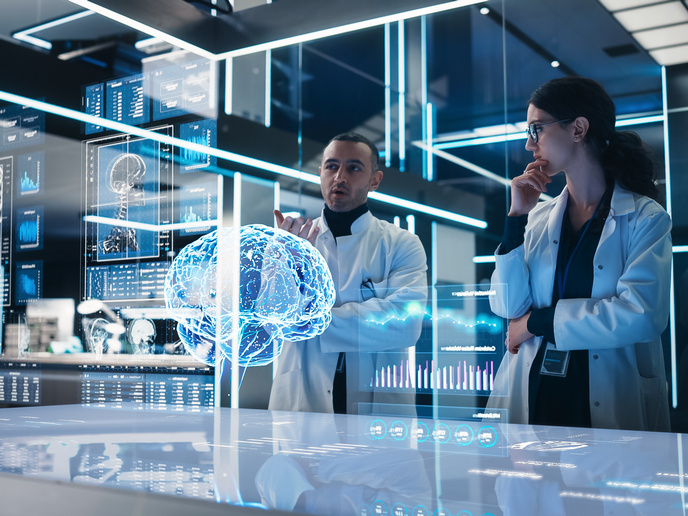Anticipating the future of digital neuroscience
A position paper published in the journal ‘Imaging Neuroscience’ outlines the current status of digital neuroscience and highlights key points for further developments in the field. The paper is the result of a collaborative effort involving more than 100 researchers, whose discussion was supported by two EU-funded projects: the third edition of the Human Brain Project, HBP SGA3, and EBRAINS 2.0. “The way in which brain research is conducted has changed fundamentally,” remarks the paper’s lead author Prof. Katrin Amunts of HBP SGA3 and EBRAINS 2.0 project partner Forschungszentrum Jülich’s Institute of Neurosciences and Medicine, Germany, in an interview posted on the EBRAINS website. Prof. Amunts is currently Joint CEO of EBRAINS, an open research infrastructure designed to accelerate brain-related research, and was Scientific Director of the Human Brain Project from 2016 to 2023. “Digital technologies and new instruments, tools and methods have transformed the field,” Prof. Amunts states. “One example is our three-dimensional brain atlas, which has now become a kind of Google Maps. It does not only offer detailed maps of the brain, but also a large amount of data and software to work with. Digitalisation has opened many doors between the ‘silos’ of the various subdisciplines in brain research and brain-related fields in recent years. In addition, new, large-scale collaborations within Europe and worldwide are creating synergies based on the shared use of data and instruments. They thus take account of the great dynamism in research. The change has led to important advances and opens up new opportunities to advance brain research, medicine and brain-inspired technologies.”
A scientific roadmap
As the field undergoes its rapid digital technology-led transformation, it becomes ever more crucial for scientists to anticipate and help shape future developments. The paper provides what Prof. Amunts describes as a type of “scientific roadmap” for this over the next decade. A total of eight key areas are identified for digital neuroscience research. The paper discusses short-, middle- and long-term goals, as well as novel medical applications. “One example … is the so-called ‘digital twin’,” states the researcher, going on to explain that “twins are computer-based, mathematical brain models that can be continuously updated with measurement data. … Personalized models will increasingly enable us to improve diagnostics and therapy. For example, research originating from the HBP is the basis to investigate the use of the ‘digital twin’ for better planning of surgical interventions for epilepsy. Virtual brains also enable us to test fundamental research hypotheses about the organization of our most complex organ, and at the same time pave the way for innovative neuro-inspired technologies.” The paper also describes other key areas such as ultra-high-resolution digital atlases and models of the brain that integrate multiple scales and modalities, neuro-derived AI and computing innovations. A key role is played by the EBRAINS infrastructure, which integrates brain research data provided by different research groups across the world and makes it accessible to others. It also gives scientists access to the most powerful European supercomputers via a computing network called Fenix and to the brain-inspired computing systems BrainScaleS and SpiNNaker. HBP SGA3 (Human Brain Project Specific Grant Agreement 3) ended in 2023. EBRAINS 2.0 (EBRAINS 2.0: A Research Infrastructure to Advance Neuroscience and Brain Health) ends in December 2026. For more information, please see: HBP SGA3 project website EBRAINS project website
Keywords
HBP SGA3, EBRAINS 2.0, Human Brain Project, brain, neuroscience, digital neuroscience



